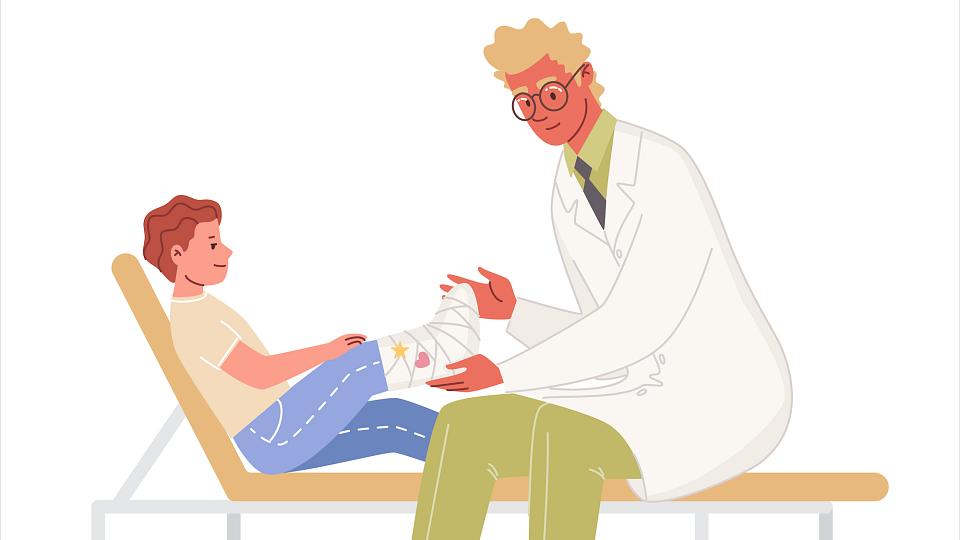
Development Matters for Sport Specialization
The days of pickup basketball games and sandlot baseball games for kids and teens have given way to specialization in organized sports at an early age. Elite teams for 8- and 9-year-old children are not uncommon. While there are many benefits of organized sport participation, there are also pitfalls in early sports specialization, too. Before your child becomes immersed in these activities, it is important to understand developmental milestones you should consider.
Early Training and Injury Awareness
Aaron Provance, MD, a specialist in pediatric sports medicine at University of Utah Health, explains that with the current pressure on kids to specialize in a sport early, it is especially important for parents to learn about the stages of physiological development.
“For parents, it can be very easy to push a little too far with intensity and volume of training at a young age, especially if your child has a burning passion or drive to really go after their dreams,” Provance says. “When that happens, it’s possible they experience overuse or traumatic injuries, where it could have some long-lasting effects on them—whether that be mentally or physically.”
He also warns that pushing young athletes too early can lead to burnout and frustration, sometimes confining kids to just one social group and creating social isolation.
According to an article in the journal Sports Health, “Research in athletes has not consistently demonstrated that early intense training is essential for attaining an elite level in all sports.” The same article found evidence that early specialization contributed to burnout and dropping out of sports.
To help avoid injuries, Provance suggests that parents follow the American Academy of Pediatrics (AAP) rule of thumb: one hour of training per week for each year in the age of a child. For example, a 9-year-old shouldn’t train for a sport more than nine hours a week. However, even the AAP states that several sports such as gymnastics, figure skating, rhythmic gymnastics, and diving, require early specialization as “peak performance occurs before physical maturation.”
Developmental Stages to Consider
Ages 2 to 5
The first stage encompasses ages 2 to 5. It’s not uncommon for 3- or 4-year olds to begin playing soccer. Provance believes at this point, sports should be introductory, where they learn they have a coach and teammates and a few basic rules.
“Obviously, we’re just getting them out there and getting them active,” he says. “At that age, they should be active for two to three hours a day. And you want to introduce them to as many different activities as possible.”
Ages 6 to 8
Around age 6, most children have the motor skills needed to play an organized sport, though they may not yet have the hand-eye coordination needed. Their learning should be focused on the fundamentals and rules of the game as well as the different positions they can play. “But really, it should be focused on fun and learning about multiple sports—not just the ones their parents played,” Provance says.
Ages 9 to 11
By the late elementary years, kids learn which positions they want to play and how to train for their preferred sports. This is when many kids start to focus on one sport and even specialize in it—perhaps training throughout the year for just that sport.
This is also the time that kids begin to experience overuse injuries because they are not allowing time for the body to recover. “When they are playing the same sport over and over again, they are using the same tendons and muscles in the same way,” Provance says. “The risk of growth plate overuse injuries increases.”
Growth plates are the areas at the ends of long bones in children (e.g., the femur in the thigh or humerus in the upper arm). Growth plates change over time and determine the length and shape of the bone when a child is fully grown. They are not as hard as the bones, so they get injured more easily.
Ages 12 to 15
This is the age that it is probably safest for young athletes to begin specializing in their sport. “They are in middle school or junior high and now know how to train for their sport,” Provance says.
Ages 16 to 18
During the high school years, athletes are starting to look at scholarships and what they are going to do with their sport for the rest of their life. Things parents should watch out for include steroid use, hazing, and unrealistic expectations. According to the NCAA, only about 1-2.6% of high school athletes go on to play Division 1 football, basketball, or soccer.

Lifetime Activities for the Win
There is no doubt that participation in organized athletics can be good for kids of all ages. But specialization too early can create unrealistic expectations for kids and cause them to lose out on lifetime sports skills or lose focus on the enjoyment of physical activity and sports.
The opposite end of the spectrum is kids are who aren’t active at all spending too much time sitting in front of computer and television screens.
Parents can help alleviate problems either way by encouraging family outdoor activities early on. Provance advises parents to start slowly with young children, gradually increasing the length of time for activities like hiking and bike riding. He also suggests sledding and indoor climbing as great activities for families to stay active in the winter months.
“And if your child doesn’t want to play super competitive sports, then the YMCA or rec centers have leagues that aren’t intense and very welcoming to people trying a lot of different sports,” Provance says.
Learn More From Our Specialists
Seven Questions for a Pediatric Orthopedic Surgeon
On this episode of Seven Questions for a Specialist, pediatric orthopedic surgeon Joshua Speirs, MD, shares insights into the typical diagnoses he encounters, debunks common misconceptions about pediatric orthopedics.





